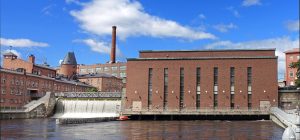Today in my “Energy and Literature” course, we’ll discuss the Icelandic movie “Woman at war / Kona fer í stríð” (2019), as well as questions of energy activism. Reading materials include Joni Hayward Marcum’s article “Visible Legacies of Invisible Resources: Gas Infrastructure, Women, and Environmental Control in 1930s British Documentary Movement Films”, and press releases by Extinction Rebellion Finland. The key concept for today’s class is “agency”.

Image source: Woman at War – Iceland | Nordic cooperation (norden.org)
We’ll also briefly discuss the issue of “reservation” of mining areas. Currently, more than 10 % of Finnish land area is “reserved” for mining exploration (note: this does not mean that mining will start, or that mining permits are granted for this area). Large parts of the area around Tampere have pending or granted reservations, including a pending reservation for an area the size of 1000 km2, by Australian mining firm “NewPeak Finland” (see for more information: Kaivosrekisterin karttapalvelu (gtk.fi)).
One of the key features of the Energy Humanities as a developing field is its critical approach, and its expressed aim to change the world through research and activism. What kind of activism is possible in an academic context, how can agency with regards to energy questions and energy transformations be described and enacted? These are some of the questions we’ll discuss today.

